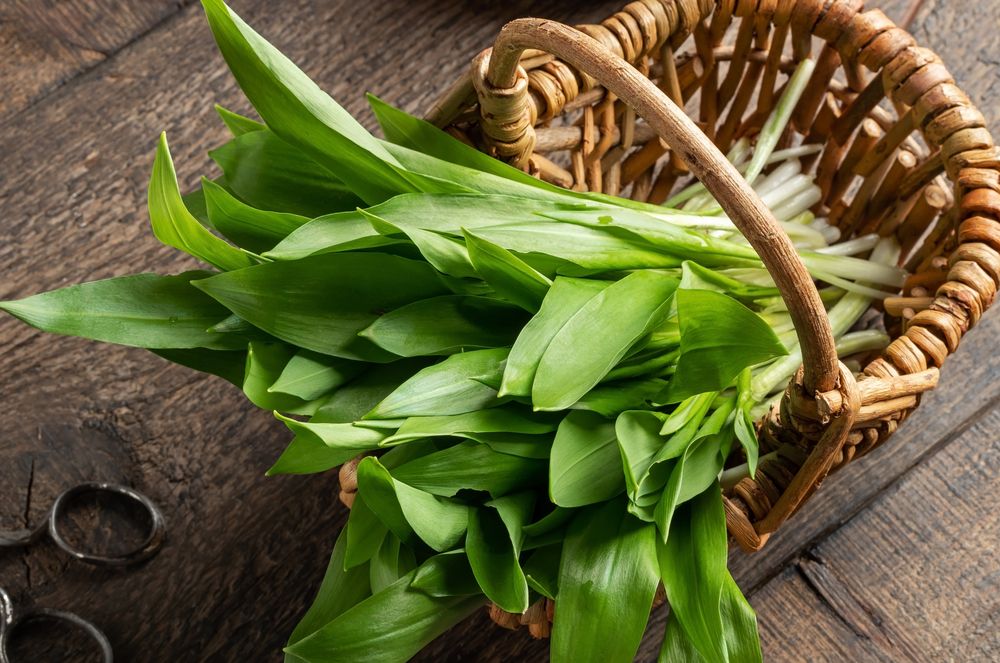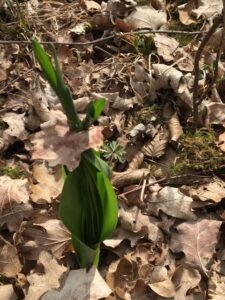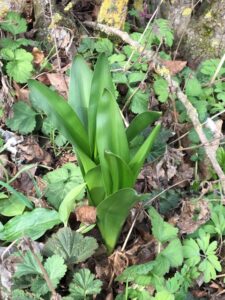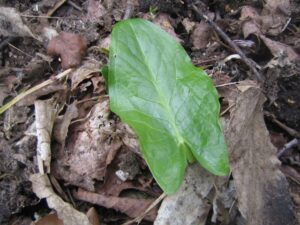Now it’s Wild Garlic Season

Spring has finally arrived, and a number of herbs are already stretching out towards the sun’s rays. In light forests we can now perceive a fine scent that comes from the green wild garlic fields. The time has come to harvest this versatile herb!
The wild garlic smell is reminiscent of garlic, chives and onions and testifies to their relationship. They all belong to the amaryllis family and the leek subfamily. Wild garlic allegedly got its name from bears who, after hibernating, were said to have eaten this herb in large quantities to stimulate their digestive tract. This herb with the garlic-like taste not only enriches our spring menu. It also provides valuable ingredients such as potassium, iron and vitamin C as well as various secondary plant substances that are responsible for the healing properties of the leek plant. Similar to garlic, wild garlic has an antihypertensive, digestive, detoxifying and diverting effect. It probably even prevents atherosclerosis. Bear’s garlic contains the sulfur-containing amino acid Allin. When the plant is cut or rubbed, enzymes convert this protein component into leek oil (allicin), which has an antibiotic effect.
On the wild garlic hunt
The best time to hunt wild garlic is between March and May. You can also harvest it when it is already in bloom. But before flowering, all the power of the plant is in the leaves and it tastes best. When harvesting, one should be careful and harvest individual leaves without a stem with a ceramic knife. Only a few plants have to be cut off from a single spot in order to preserve the stand. Very important: take a good look at the harvested crop and rule out any mix-ups. Because autumn crocus, lilies of the valley and arum are poisonous look-alikes that sometimes sneak into the wild garlic carpet. However, if you are careful you can easily tell them apart. Relying only on the smell doesn’t help. If you have picked up some wild garlic leaves, everything smells like garlic.
So it’s better to pay attention to the clear characteristics: With wild garlic, each leaf comes out of the ground with its own petiole. It is matte on the back and has a distinct vein of leaves and parallel leaf veins. The leaf of the arum also has its own petiole, but the leaf veins run like a network. The leaves are more rounded. The autumn crocus develops a shoot with several leaves on a stem – without a distinct petiole. The leaves surround the stem and are fleshier than those of wild garlic. In the lily of the valley, two basal leaves grow on a pseudo-leaf stem. The underside of the leaf is shiny. If you are still unsure, you can currently simply buy fresh wild garlic at the market.
Process wild garlic in the kitchen
Whether you have collected it yourself or bought it, you should wash it thoroughly to remove any traces of fox tapeworms. If you want to be absolutely sure, only use wild garlic heated. In doing so, however, it loses its characteristic taste. Finely chopped wild garlic on bread and butter, seasoned with a little salt – a quick spring delicacy. It also tastes good in an omelette, with potatoes, in quark or in a salad. The whole leaves can be used to wrap fish or cheese. Or you add a few finely cut leaves to the bread dumpling mass and thus have wild garlic dumplings. A wild garlic pesto is very easy to preserve the spring herbs for a while. To do this, cut one to two handfuls of fresh wild garlic and put it in a blender along with 100 grams of sunflower seeds, ½ teaspoon of salt, some pepper, 1 teaspoon of lemon juice and 8 tablespoons of good olive oil. If you like, you can also add a clove of garlic.If the mass is homogeneous, pour it into a clean screw-top jar and make sure that the surface is always covered with oil. Store in the refrigerator. The pesto goes well not only with pasta, but also with potato or rice dishes. It also tastes very fine as a spread.
Good news: wild garlic is odorless
And now some good news at the end. Although wild garlic tastes similar to garlic and is as healthy as its relative, it has a clear advantage: After consuming wild garlic, our body does not give off any unpleasant fragrances. So nothing stands in the way of this!
My recommendation if you want to read more about wild garlic read this: “Wild Garlic, Gooseberries and Me: A Chef’s Stories and Recipes from the Land”* from Denis Cotter
*This is an affiliated link. You don’t pay more. It is just a little thank you for our team.
Leadphoto: Madeleine Steinbach@shutterstock, Sabine Häberlein (9)

CultureAndCream author from Munich
As a nutritionist and passionate cook, I am interested in everything that has to do with good food. For me, enjoyment is a priority. As I see it, only when something tastes good can it be good for the body and, after all, the health aspect can’t be neglected. When I am on the road, I love to try local specialities, provided they are vegetarian. More recently I have embarked on an intensive study of wild plants, their traditional healing effects as well as their culinary potential. An exciting field! My other passion is opera, music which simply opens my heart and I attend performances just as often as I possibly can.










